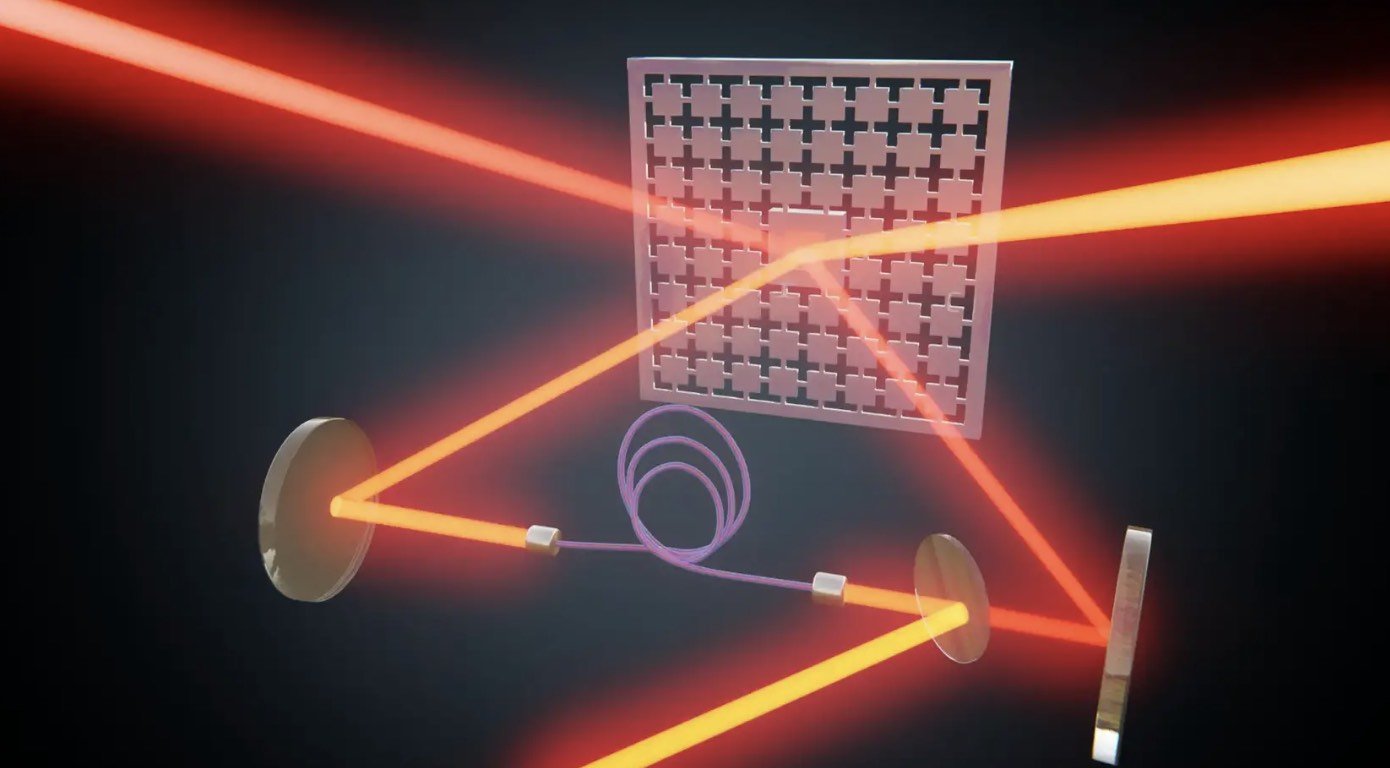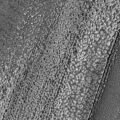A team of researchers says they have developed a new technique that allows them to cool a small membrane to temperatures nearing absolute zero, the theoretically lowest temperature attainable, with nothing more than light from lasers.
For centuries, it has been understood that the reflection of light off the surface of objects produces a force. Such observations led astronomer Johannes Kepler to first envision the concept of solar sails which, like the sails that capture wind and propel boats across the ocean, could drive futuristic sailing vessels through space.
Such ideas helped early astronomers understand why the appearances of comets always revealed them to be oriented with their tails in the direction opposite of the Sun. Today, scientists are employing the light force in novel ways that allow atoms and other particles to be slowed down and thus cooled.
The results of such technology could enable innovative new applications that include sensors that possess unparalleled sensitivity. However, cooling particles down to such extreme temperatures, such as those nearing absolute zero, isn’t a simple task, and generally requires an array of specialized equipment.
Enter Professor Philipp Treutlein of the University of Basel, along with Dr. Patrick Potts, whose team has succeeded at producing a new process that allows a wafer-thin membrane to be cooled to such extremely cold temperatures—close to 273.15 Celsius—with nothing but laser light.
In the past, Professor Treutlein worked alongside Theodor W. Hänsch in his lab at LMU Munich and the Max-Planck-Institute of Quantum Optics, initially working as a doctoral student in Jakob Reichel’s team. Treutlein eventually went on to lead a team of his own, which undertook studies with ultracold atoms, primarily in what are known as “atom chips”, consisting of chip-based microtraps.
Through their studies, Terutlein and his team were able to demonstrate a chip-based atomic clock, as well as a unique atom interferometer, in addition to conducting some of the earliest experiments involving quantum metrology with entangled atoms.
In 2010, Treutlein came to the University of Basel, establishing a team that continued research into ultracold atoms, along with optomechanics (involving interactions between electromagnetic radiation and mechanical systems related to radiation pressure), as well as hybrid quantum systems.
The new technique Treutlein’s team of researchers devised is novel because the cooling effect they succeeded in engineering can be achieved even without any requirement for making measurements, which are significant in terms of the laws of quantum mechanics since measuring any component of a system will inevitably lead to a change in its quantum state, resulting in disturbances.
Although measurement is typically also required in things like a feedback loop, the Basel University researchers were able to find a workaround for this by developing what they characterize as a coherent feedback loop, where laser light is used to function as both a sensor, but also as a kind of damper that allowed them cool thermal vibrations in a small silicon nitrate membrane.
“Our platform consists of a light beam exerting a force onto a nanomechanical membrane oscillator,” the team reports in a recent paper detailing their experiments. “Vibrations of the membrane generate a phase modulation on the light, which serves as a readout signal.”
Directing a laser onto the membrane, the reflected light was fed into a 30-meter-long fiber optic cable that allowed optimal delay times of close to 100 nanoseconds, while vibrations in the membrane produced very minute changes in the oscillations of the light being reflected.
From the oscillations, the team was able to obtain information that was used with a time delay to determine the exact amount of force to be applied to the membrane with the same laser light.
Maryse Ernzer, a Ph.D. student and lead author of the new research paper outlining the team’s studies, compared it to “slowing down a swing by briefly touching the ground with one’s feet at the right time.”
The lowest expected temperatures were calculated using a theoretical description based on the new technique, which the researchers say experimental results were able to thereafter confirm.
Postdoc researcher Dr. Manel Bosch Aguilera, also one of the team members, said in a statement that he and his colleagues succeeded in cooling the membrane to 480 micro-Kelvin, which approaches within one-thousandth of a degree of absolute zero.
Based on their findings, the researchers hope to find ways to improve their new technique, allowing future experiments with membranes under such conditions to be chilled to the lowest possible temperatures indicating the membrane’s quantum mechanical ground state.
Once this is achieved, the researchers foresee being able to create “squeezed states” in the membrane, conditions that would be useful in the construction of sensors with applications that include atomic force microscopes capable of observing surfaces at resolutions down to the nanometer.
The team’s paper, “Optical Coherent Feedback Control of a Mechanical Oscillator,” was published in Physical Review X.
Micah Hanks is the Editor-in-Chief and Co-Founder of The Debrief. He can be reached by email at micah@thedebrief.org. Follow his work at micahhanks.com and on Twitter: @MicahHanks.

